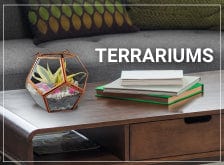How to Grow
Grafting - A Technique for Growing Healthy Plants
In my previous blogs, I had discussed about many plant growing techniques. The previous blogs have explained about Germination, Maintaining the plants during summer, Growing plants from the bulbs, The technique of growing plants in the air or moist environment called Aeroponics, the technique of growing plants in water called Hydroponics etc., Today I'm here to explain about a new technique of growing the plants effectively. This technique is called Grafting.
What is Grafting?

Grafting is a technique of combining the tissues or the growing part of two different plants in order to improve the productivity of the plants. This may include the plants of the same category or of a different category. The upper part of the combined plant is called the scion and the lower part is called the rootstock. As the name itself suggest, the roots of the rootstock plant will be in contact with the growing medium and the scion plant gets the nutrients required for its growth through the intersection or the junction where both the plants are combined.
Grafting is an ancient technique which is said to be developed in the time of Roman Civilization. According to the studies, by 500 BC, grafting was well established and practiced in Rome. Grafting is also mentioned in the New Testament and there is a discussion about the grafting of wild olive trees which tells about the relationship between Jews and non-Jews. This technique does not modify the genetic characteristics of any plants. Both the plants retain their characteristic features and grow together as a single plant.
Methods of Grafting
There are several methods of grafting the plants depending upon the requirement. Here are some of the methods which are commonly used in grafting.
1. Approach Grafting:


Image source
Approach Grafting is one method of grafting where two independent plants are joined together with the roots of both the plants below the soil. The distinctive feature of Approach Grafting is that two independently growing, self-sustaining plants are grafted together. As the roots of both the plants are in the soil, both the plants are sustainable to survive even if the grafting attempt fails. So this can be the best method to graft the plants. The stems of both the plants are partially chipped at a similar height and joined together using the thread or growing tape. The plants take a minimum 4 weeks to combine gradually and grow successfully.
2. Bud Grafting:


Image source
Budding is a process of combining two plants using the buds. The bud of one plant is placed in the stem of the other plant. Grafting rose plants is the most common example of Bud Grafting. In this method, a bud is removed from the parent plant, and the base of the bud is inserted beneath the bark of the stem by making a small slit such that the bud can be accommodated. Rest of the shoot has to be cut from the rootstock plant. Any extra bud that starts growing from the stem of the rootstock plant needs to be removed. A Budwood or Budstick is a part of the plant with several buds on it. A budwood is taken and placed in the slit made on the rootstock. The intersecting point is tied with a thread to make the combination happen effectively.
3. Cleft Grafting:


Image source
Cleft Grafting is one of the easiest methods of Grafting. Two plants can be easily grafted by this method. Firstly you need to take a Rootstock or the bottom part of a plant and chop the top layer. A scion or the top layer of another plant is taken and chopped in V shape. A perpendicular slit is made on the Rootstock such that the scion can easily coincide with it. The scion is placed inside the rootstock and fixed firmly. The intersection is tightly packed using a thread or a tape.
4. Whip Grafting or Tongue Grafting:


Image source
Whip Grafting or Tongue Grafting is the oldest and most commonly used grafting method. This method is used for Apple and Pear trees. Two similar sized plants are to be taken for this method. The top portion of the Rootstock plant and the bottom portion of the scion plant is chopped diagonally such that the chopped portion of both the plants coincides perfectly. The chopped parts are placed one above the other providing a good contact between the Rootstock and the scion. The intersection is tightly packed using the thread or tape such that the contact is established effectively. A major strong point for whip grafting nursery stock is the smooth and straight trees that are produced by this method.
5. Four-flap Grafting:

Four-flap Grafting is another method of grafting the plants. This method resembles the peeling process of Banana. So can also be called as Banana Grafting. The top portion of the Rootstock plant is chopped off and flapped into four parts using the grafting knife. The outer layer of the rootstock is peeled to a certain length and the inner stem part is chopped off. Make sure not to peel off the outer layer from the stock. The outer layer of the Scion plant is chipped off to the same length such that the scion can be easily fixed inside the rootstock. The peeled layer is closed and tightly packed using a thread or a tape.
Popular Searches: Garden Accessories for Sale, Compost Bin India, Plastic Flower Pots Online, Contemporary Plant Pots, Hanging Pots Online, Colourful Plant Pots, Bird Feeders Online, Rectangular Planters Online, Small Pots Online, Flower Pots Online, Kitchen Waste Compost Bin, Balcony Railing Planter





Had learnt these methods of grafting from my Dad about 30 yrs ago. Thanks for bringing back lovely memories.
Excellent education Improving my knowledge of gardening.
Excellent Informative.
Grafting methods achhi trah smajhaya gaya hai.
Konsi sezan mey thek rhega?
Artificial vegetative propagation,which helps in propagating healthy hybrids on a large scale. ..thank you for your blog